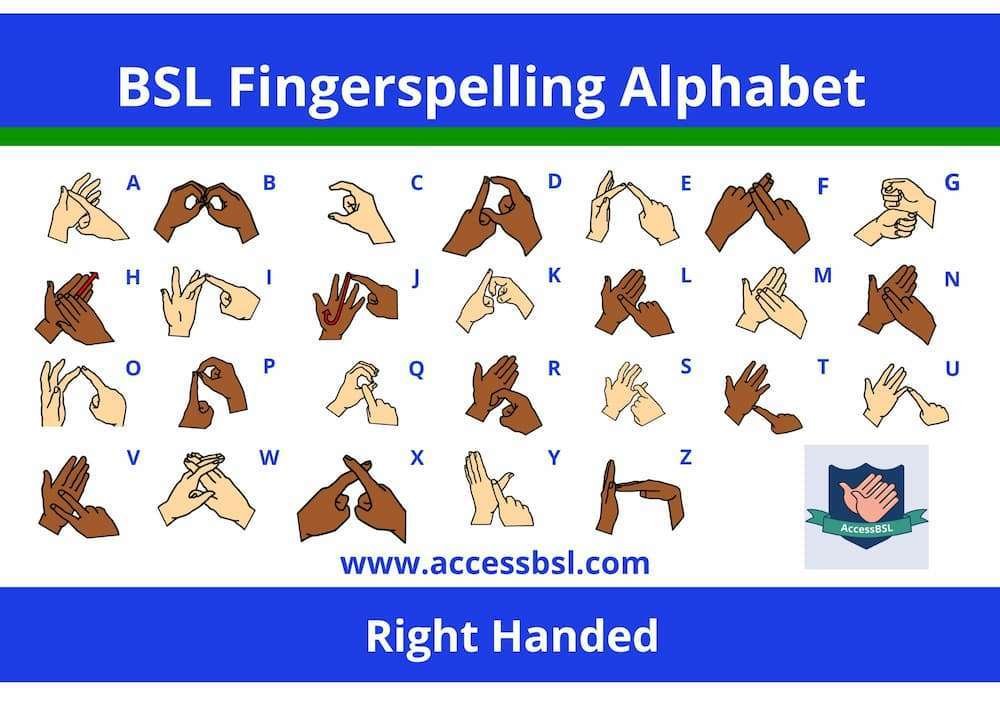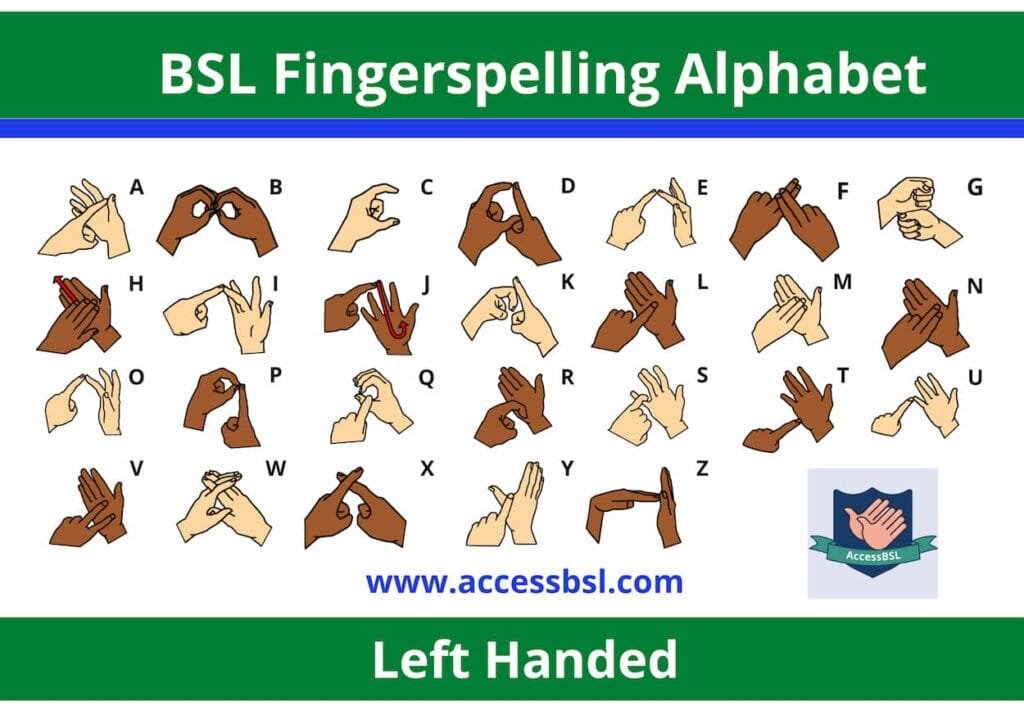The fingerspelling alphabet is a method for representing letters of the alphabet and numbers on the hands. It is referred to in BSL as the manual alphabet. It represents the written form of English. It is used to spell a person’s name, a place or can be used as a sign e.g. the sign for ‘mother’ in BSL is the fingerspelled ‘m’ on the palm of your other hand or ‘m’ tapped on the side of your forehead (see videos below).
The sign language alphabet is useful if you don’t know a particular sign or if there is currently no sign for a specific term. You can also use it for checking if you understood a sign. Sign Language interpreters will use this strategy is they do not recognise a particular sign.
The alphabet is usually taught alongside essential greetings like ‘what is your name?’. Your understanding of fingerspelling is also tested on exams.
Many older Deaf community members use fingerspelling as their preferred way to communicate. This is due to the fact that BSL was suppressed for the early part of the 20th century. There are many stories of children attending schools and being told off for signing. Using sign language was frowned upon for much of the 20th century so children often devised ways of fingerspelling without it looking like they were fingerspelling!
According to Wikipedia, fingerspelling acts as a bridge between sign language and oral language. It is used in different sign languages across the world. BSL uses a two handed manual alphabet, as does New Zealand and Australia (Auslan). Other sign languages e.g. Irish Sign Language (ISL) uses a one handed alphabet.
The manual alphabet is used by BSL users and SSE users. Below are printable fingerspelling alphabet charts:


The Deafblind alphabet is based on the BSL manual alphabet. The alphabet also uses two hands but it is more tactile to compensate for the inability to use sight to work out what word is being spelled.
Fingerspelling tips:
- Try not to look at your hands (or the other person’s) when fingerspelling
- Mouth the word at the same time as spelling it – you usually say the word by the end of the fingerspelling.
- Make sure your hands are in the same frame as your face i.e. chest height, so someone can read your lips and read the word you spell.
- Practise fingerspelling for 5 minutes everyday to embed your muscle memory
- Try to fingerspell word phonetically rather than spell out each letter.
Deaf Comedy – ‘The Fingerspellers’
This funny video is part of a series and shows the funnier side of fingerspelling. Check it out!
Did you know that there is a world record for the fastest fingerspelling? The record was achieved by Thomas McWhinney in 2008
If you want to learn how to sign simple greetings such ‘hello, my name is…’, you can check out our other posts are guides.

